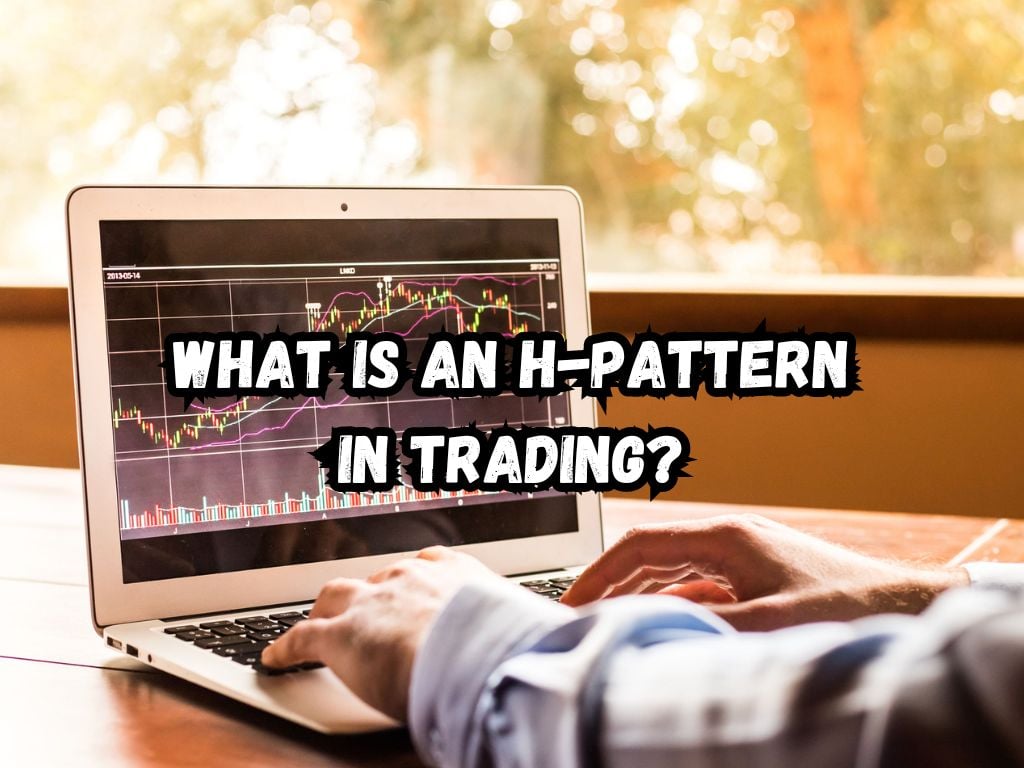Chart patterns play a pivotal role in trading, offering insights into market sentiments and future price movements.
Among these patterns, the H-pattern stands out for its distinctive shape and the valuable trading signals it provides.
This guide delves into what is an H pattern in trading, revealing how traders can leverage this unique pattern to make informed decisions.
What Is an H Pattern In Trading?
The H-pattern is a chart formation that traders look for to predict future market movements. It resembles the letter ‘H’ on stock charts, indicating potential reversals or continuations in price trends.
Understanding the psychology behind the pattern is crucial. It reflects a specific market sentiment that may result in a sudden shift in price action.

Identifying the H-Pattern
Recognizing the H-pattern involves more than spotting a shape on the chart. It requires attention to detail and an understanding of the context in which the pattern forms. Here are the steps to identify it correctly:
- Look for a Downtrend: The H-pattern typically appears during or at the end of a downtrend.
- Identify the Legs: The pattern consists of two vertical lines (legs) connected by a horizontal line (the base).
- Confirm with Volume: An increase in trading volume as the pattern completes often confirms its validity.
Including visual examples from different markets enhances your ability to spot the pattern. Whether trading stocks, forex, or crypto, these examples serve as a vital learning tool.
Significance of the H-Pattern in Trading
The H-pattern signals potential market turns. Its appearance suggests traders are increasingly uncertain, potentially leading to a reversal.
Understanding the pattern’s implications is vital for both bullish and bearish traders. It helps in forecasting market direction with greater accuracy.
How to Trade the H-Pattern?
Trading the H-pattern successfully requires a strategy that accounts for entry points, stop losses, and profit targets.
- Entry Points: Traders often enter a trade as the price breaks above the top leg of the H. This signals a potential reversal of the prior downtrend.
- Stop Loss Placement: A stop loss is usually set below the lowest point of the H-pattern. This mitigates risk if the market moves unfavorably.
- Profit Targets: Setting a profit target involves measuring the height of the H and projecting that distance upwards from the breakout point.
Integrating other technical analysis tools, such as moving averages or RSI, can increase your success rate. These tools help in confirming the signals provided by the H-pattern.
Case Studies
Examining real-life trading scenarios where the H-pattern has been successfully utilized can provide deeper insights. These case studies demonstrate how traders identified the pattern, made their trading decisions, and managed their positions.
The lessons learned from these examples are invaluable, offering practical tips for spotting and capitalizing on the H-pattern in various market conditions.

Technical Indicators and the H-Pattern
When merged with the H-pattern, technical indicators enhance the robustness of trade signals. Moving Averages can help traders determine the strength of the trend before and after the H-pattern forms.
The Relative Strength Index (RSI) is valuable for confirming whether the asset is in overbought or oversold territory, which often precedes a reversal indicated by the pattern.
Additionally, the Moving Average Convergence Divergence (MACD) can signal momentum shifts that align with the H-pattern’s predictive nature.
By incorporating these indicators, traders gain a multi-dimensional view of market conditions, boosting their confidence in the trade signals they derive from the H-pattern.
Frequently Asked Questions
Is the H-pattern more relevant for certain markets or trading styles?
The H-pattern can be applied across various markets, including stocks, forex, and crypto. Its relevance is not limited to a specific trading style. However, its utility might be more pronounced in markets characterized by high volatility, where clear patterns can emerge from the noise.
How reliable is the H-pattern in predicting market movements?
No chart pattern guarantees a specific market movement. The H-pattern, like all patterns, should be used as a part of a comprehensive trading strategy. Its reliability increases when confirmed by other indicators and trading volume.
Can the H-pattern be automated using trading bots?
Yes, the H-pattern can be programmed into trading bots. However, ensuring the bot accurately identifies the pattern and its context is crucial. A blend of technical indicators often aids in enhancing the bot’s effectiveness.
What are common mistakes traders make when interpreting the H-pattern?
Traders often mistake temporary price movements for a legitimate H-pattern. Confirming the pattern with volume and other technical indicators is essential to avoid false signals. Additionally, patience in waiting for the pattern to fully form before executing trades is vital.
Conclusion
The H-pattern is a powerful tool in a trader’s arsenal, offering clear signals for potential market turns. Mastering its identification and application requires practice and patience.
By understanding and utilizing the H-pattern, traders can refine their strategies, making more informed and confident trading decisions.
Mastering the H-pattern offers traders an edge in navigating the complexities of the market. Through diligent practice and continuous learning, its benefits can be fully realized, contributing to a more informed and effective trading strategy.


 Tags:
Tags:










